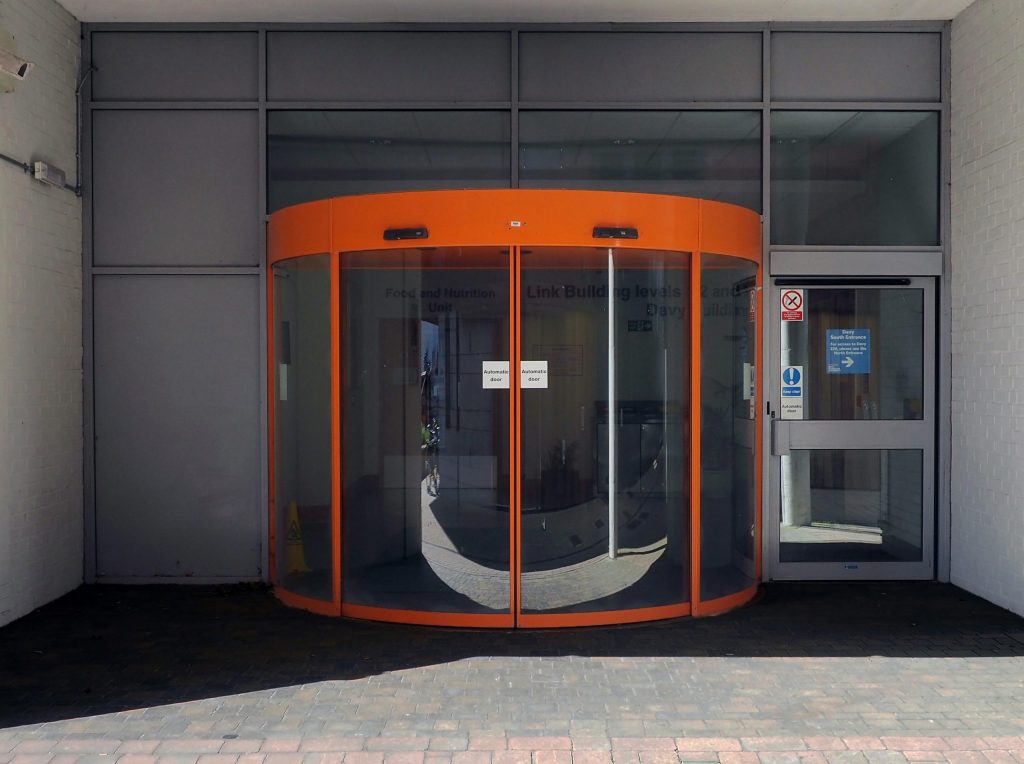Origins of UDL
This chapter was adapted from Universal Design for Learning (UDL) for Inclusion, Diversity, Equity, and Accessibility (IDEA) Copyright © 2022 by Darla Benton Kearney, which is licensed under a Creative Commons Attribution 4.0 International License
Concept of Universal Design
In the 1980s, architect Ronald Mace introduced the term Universal Design (UD). In its original application, UD refers to “the design of products and environments to be usable by all people, to the greatest extent possible, without the need for adaptation or specialized design” (Connell et al., 1997). For example, consider the barriers presented by entering a building that has steps up to a door with handles. Who would have difficulty accessing such a building?

Now, consider a building entrance that is at ground-level entry with doors that open automatically. Who would have difficulty navigating this building?

Just as stairs pose barriers in the built environment, there are barriers to learning in education. The concept of removing barriers and increasing access has been applied to the field of education with the development of various UD frameworks, including Universal Instructional Design (UID), Universal Design for Instruction (UDI), and Universal Design for Learning (UDL).
Despite their differences, inclusive instruction is the common goal of all three of these frameworks. The ultimate goal of inclusive instruction is to remove unnecessary barriers and improve access for all learners.
Universal Design for Learning
In the 1900s, David Rose, Anne Meyer, and their colleagues at the Center for Applied Special Technology (CAST) developed the UDL framework![]() , which is the only UD framework that is based on research on cognitive neuroscience (Meyer, et al. 2002; Rose, Rouhani, et al., 2013; Rose, 2016). CAST is an organization whose mission is to eliminate barriers to learning and support the development of expert learners while addressing aspects of inclusion, diversity, equity and accessibility.
, which is the only UD framework that is based on research on cognitive neuroscience (Meyer, et al. 2002; Rose, Rouhani, et al., 2013; Rose, 2016). CAST is an organization whose mission is to eliminate barriers to learning and support the development of expert learners while addressing aspects of inclusion, diversity, equity and accessibility.

A key aspect of UDL is understanding that all learners are variable and that the “average student” simply does not exist. We cannot plan for every learner variable, but we can design, develop, and deliver our curriculum knowing our learners will have diverse needs and providing them options to ensure everyone’s needs are met.
View this short video (run time: 6 minutes and 7 seconds) that provides a good overview of designing for ‘everyone.’
Text Attributions
This was adapted from Universal Design for Learning (UDL) for Inclusion, Diversity, Equity, and Accessibility (IDEA) Copyright © 2022 by Darla Benton Kearney, which is licensed under a Creative Commons Attribution 4.0 International License

